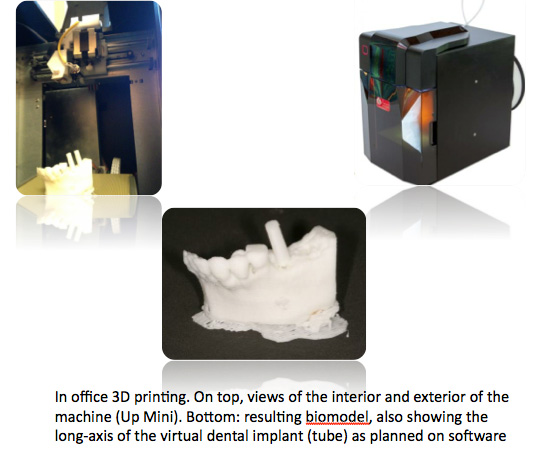As a dentist practicing Periodontics and Implantology in the US, my personal history with 3D printing goes back some twelve years or so, when I first started experimenting with 3D printed surgical guides from Materialise. At around the same time I started to use in-office 3D radiography and was considered an early adopter in this regard. Even then, I saw the promise of 3D printing technology and the desirability of bringing it in-house to improve the services I can offer my patients and therefore, their overall experience. I have been closely watching developments across the 3D printing industry with this in mind, pertinently aware that there were barriers, however, over the last few months, I have been 3D printing biomodels and surgical guides “in-house” and slowly incorporating this new approach into my daily surgical practice, which involves a combination of 3D scanning scanning, digital models. and a 3D printer.
Here I want to tell you the differences and improvements this technology is bringing to my practice.
When Ms. S presented with a missing front tooth after a sport accident, she was concerned and anxious about the process of replacing it with a dental implant. There were many questions and unknowns about her condition. With an in-office Computed Tomography (CT) scanner, the clinical examination could be followed immediately by the 3D radiograph. Within minutes, we knew what bone anatomy was available, and could plan the surgery quickly. We could plan implant position and size using dedicated software. Yet, transposing planning to surgery remains a problem. Third party companies can fabricate a CAD/CAM surgical guide, using 3D printing. However, it takes about a week or more to obtain the guide. In addition, the process is complex: CT data needs to be uploaded, planning needs to be checked and approved, and guide providers often need to be mailed a plaster model for accuracy.
Instead, in-office 3D printing is an opportunity to simplify and accelerate the process. At the moment, fabrication of biomodels is simple: CT data is segmented using simple software, and STL files are sent to the printer within minutes. Biomodels allow for visualization, manipulation and communication. Patients can better understand their condition, and general practitioners who are not surgeons can better communicate and coordinate care. If a change needs to be made, re-printing is simple and fast.
In-office 3D printing is a relatively simple process. The patient undergoes in-office CT scanning as usual. The readily available machine is specific to dental applications, uses low radiation and high accuracy. Results are visible within minutes. Prior to printing a model, the CT data is opened using dedicated software. Next, segmentation of images is performed: this maneuver consists of selecting a level of grayness which belongs to bone, in order to separate osseous contours to adjacent soft tissues. A simple click into the region of interest represents a seed from which software can calculate the boundaries of bone. Again, this step takes less than a minute. Once the selection is completed, data is exported in STL format, and ready to print.
In the near future, we will be able to print surgical guides ourselves, to be used in surgery. These guides have precise locations and sleeves that help the surgeon place implants accurately. They replicate planning performed on the screen using virtual surgery. This is not new and is a proven approach. However, it is seldom used because of issues listed above (time to fabrication, complex process, not to mention cost).
Bringing it in-house will make a huge difference to the way we operate and to the experience of our patients.



